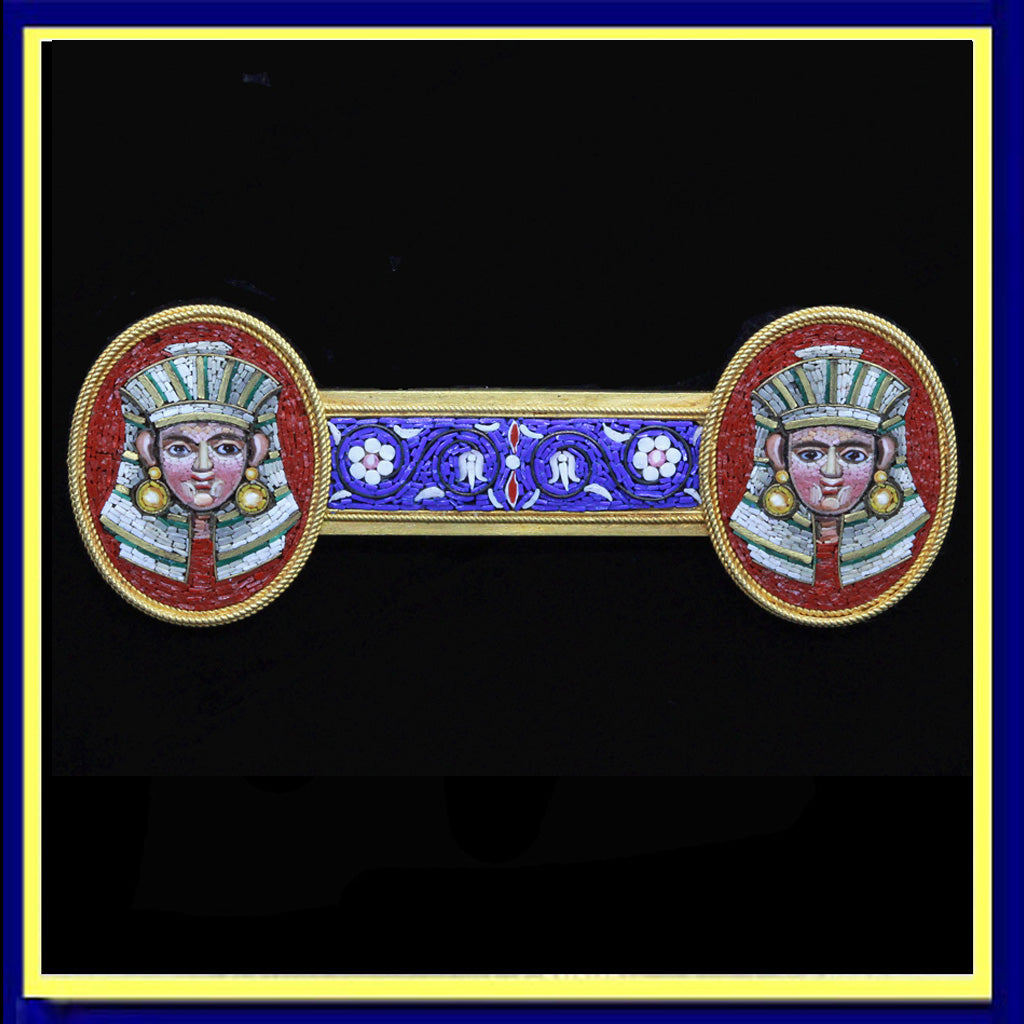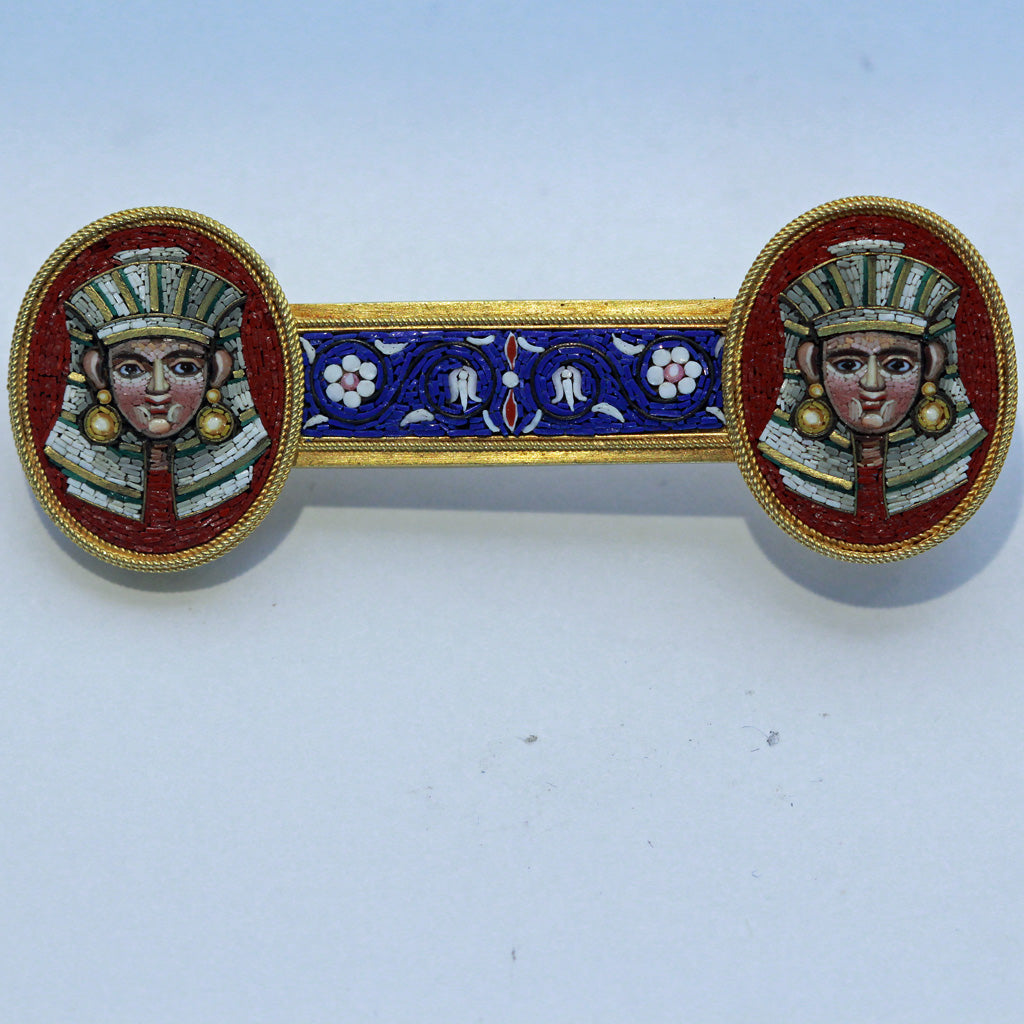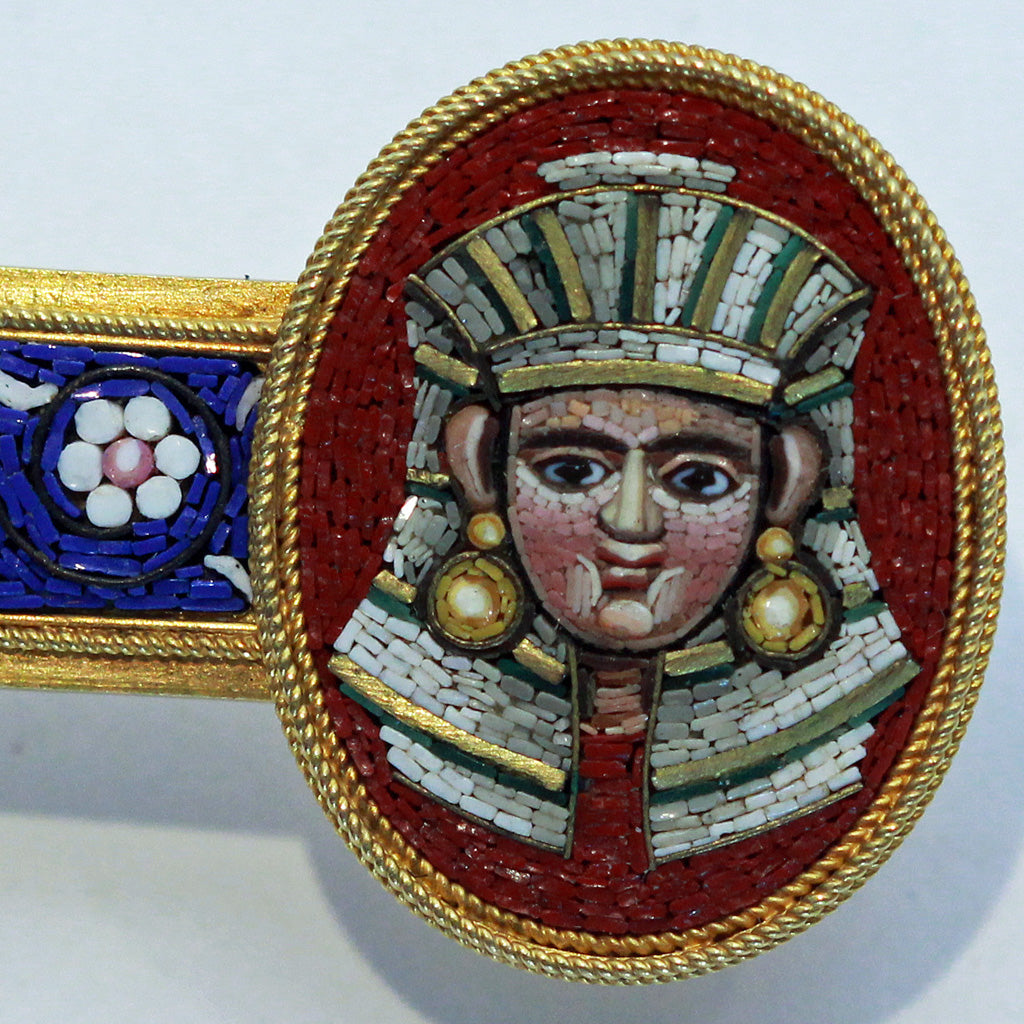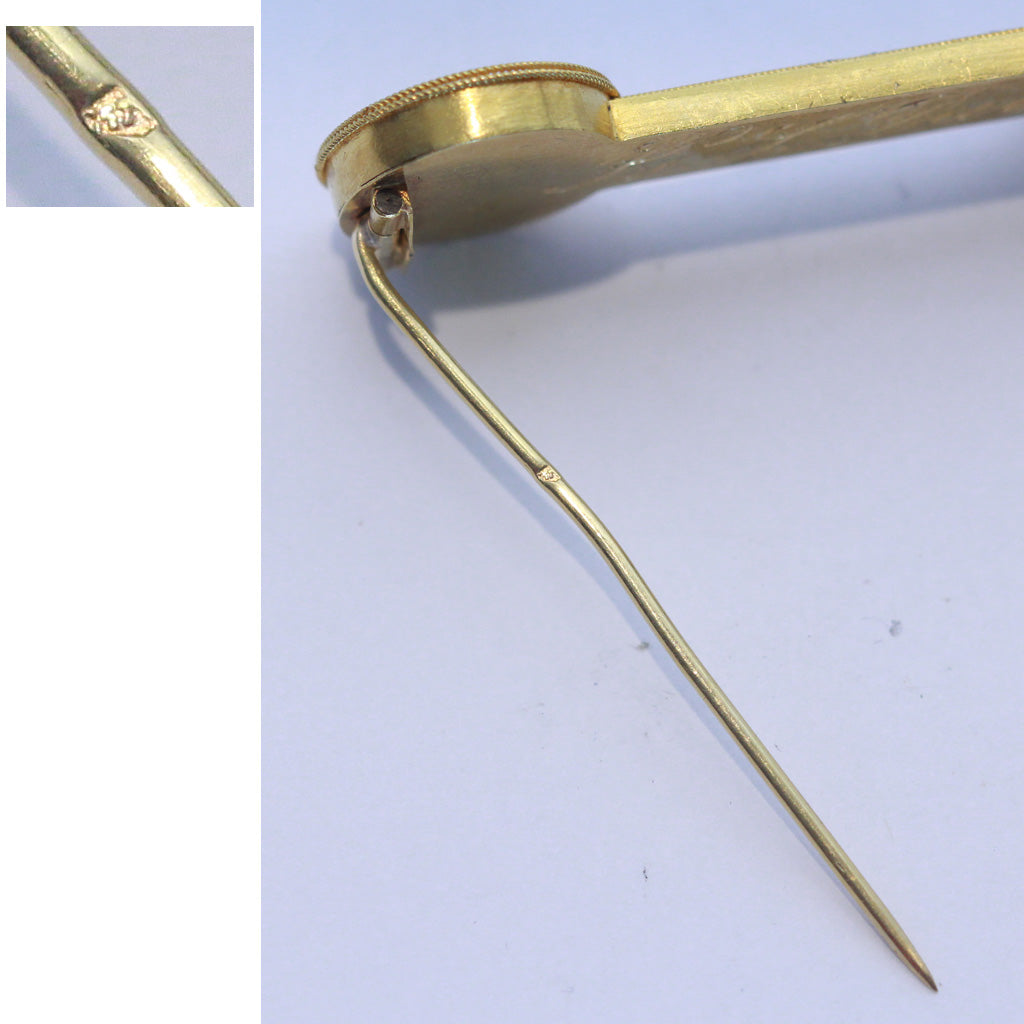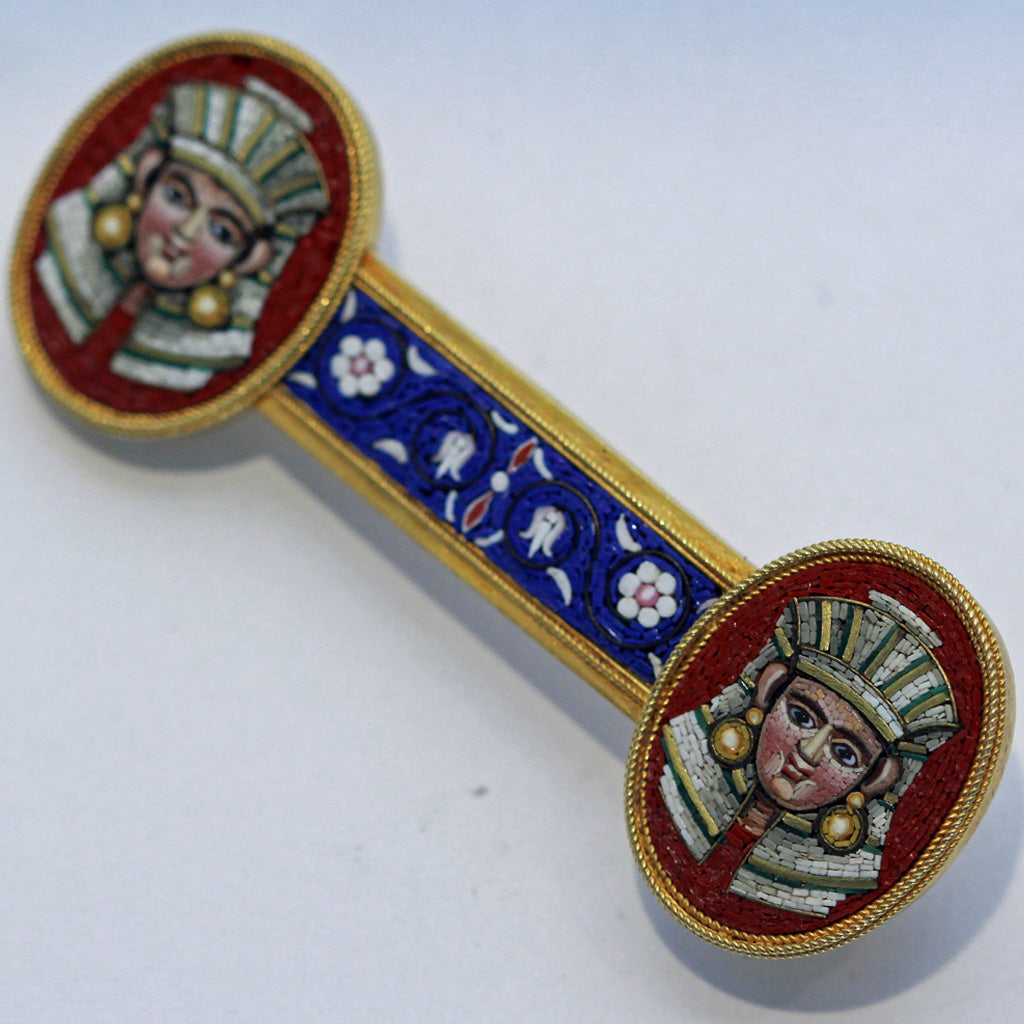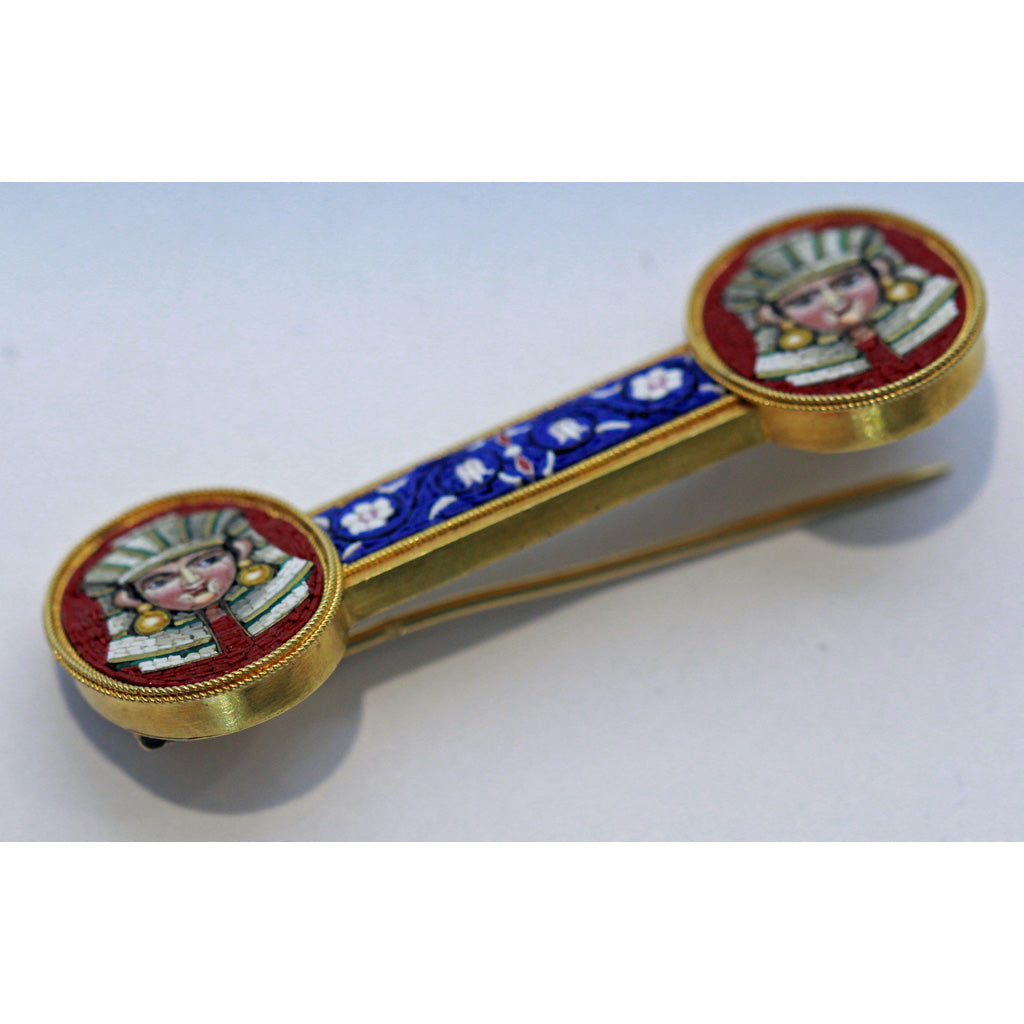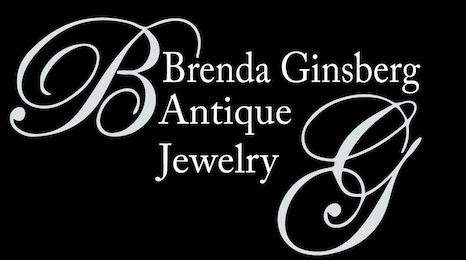Brenda Ginsberg Antiques & Jewelry
Victorian Egyptian Revival Micromosaic Brooch 18k Gold Pharaoh Unisex (6840)
Victorian Egyptian Revival Micromosaic Brooch 18k Gold Pharaoh Unisex (6840)
Couldn't load pickup availability
Antique Victorian Archaeological Egyptian Revival brooch. 18k gold and micromosaic plaques. Made circa 1880.
Measurements: Weight is 11.5 grams. Length is approximately 2 1/4 inches (6cm). Seen on your full screen highly magnified.
Description : Micromosaic brooch in the Archaeological Revival style reflecting Egyptomania during the 2nd half of the 19th century with the excavations of the Old World. The Victorians, like their later counterparts during the Art Deco period, were obsessed with Sphynxes, Pharoahs, lotus leaves and pyramids.
This brooch depicts a double Pharaoh portrait. Each head is placed on a deep red / brick orange ground. A luxurious element is the gold detail and tesserae that form outlines and highlights, flashing as the light catches them. Huge golden ear pendants suspended below headdress. Great color range. Each head surrounded by a double oval rope twist frame of filigree 18k gold.
Fine detail - see the glint in the Pharoah's eyes and the goldwork of the mount.
The bar connecting the headed terminals is bordered by broad gold bands with inner gold rope-twist borders. Very finely worked. Within, on a bright blue ground, are gold ribbon scrolls and botanic-themed micromosaics.
Hinged pin and clasp. Engraved name of the original owner K.L. Day (possibly K.S. Day - see 'photos) forms a material link over the centuries between generations who have enjoyed and appreciated this wonderful antique jewel.
Marks and Metal: There is a hallmark on the pin that includes a tiny flower. Gold was acid and electronic tested to ensure metal purity.
Condition: Good with minor wear commensurate with age. Pin is slightly bent, as is to be expected from almost 150 years of use. One or two tesserae are slightly sunken, but we did not find any missing. Please see enlarged pictures and don't hesitate to ask questions which we will do our best to answer.
THE STORY: For hundreds of years, the world has been fascinated with Ancient Egypt.
Following Napoleon Bonaparte's campaigns in Egypt, there was a huge mania for Egypt-related jewelry in France.
With the opening of the Suez Canal in 1869, there was an even bigger resurgence of this passion. Even jewellers like Castellani, who generally focused on the Ancient Greeks and Etruscans, made fabulous jewelry set with micromosaics as echoes and in homage to the Ancient Egyptians. Most of us will never see a Castellani micromosaic in the Ancient Egyptian style, but there are some available by other makers such as out brooch #6840 with Pharoah portraits. Other fabulous jewels, enamelled, set with gems, in a variety of materials from wood to gold and platinum, show the range of influence of Ancient Egypt.
Louis Comfort Tiffany, who toured in Egypt as a young man was greatly influenced by Ancient Egypt both in his early jewelry and in the making of glass.
Egyptian Revival jewelry received its greates boost after 1922, when Howard Carter discovered King Tutenkhamun's tomb.
Some Egyptian Revival jewelry is accurate in its depiction of hieroglyphics and other Egyptian symbols.
Some of the most interesting jewelry from the late 19th century in this style incorporate actual Ancient Egyptian items - medallions, faience, scarabs into their gold mounts.
Most Egyptian Revival jewels are more decorative, using the symbols of snakes, cats, sphynxes, pharoahs and scarabs in a more decorative fashion.
